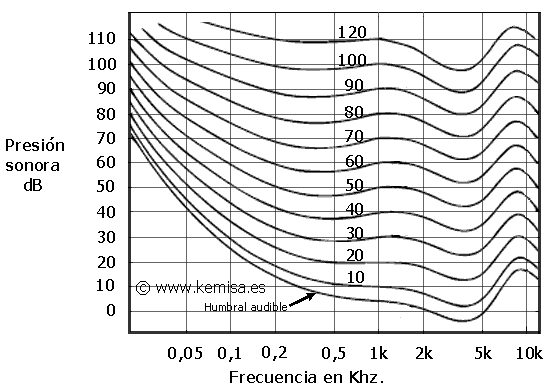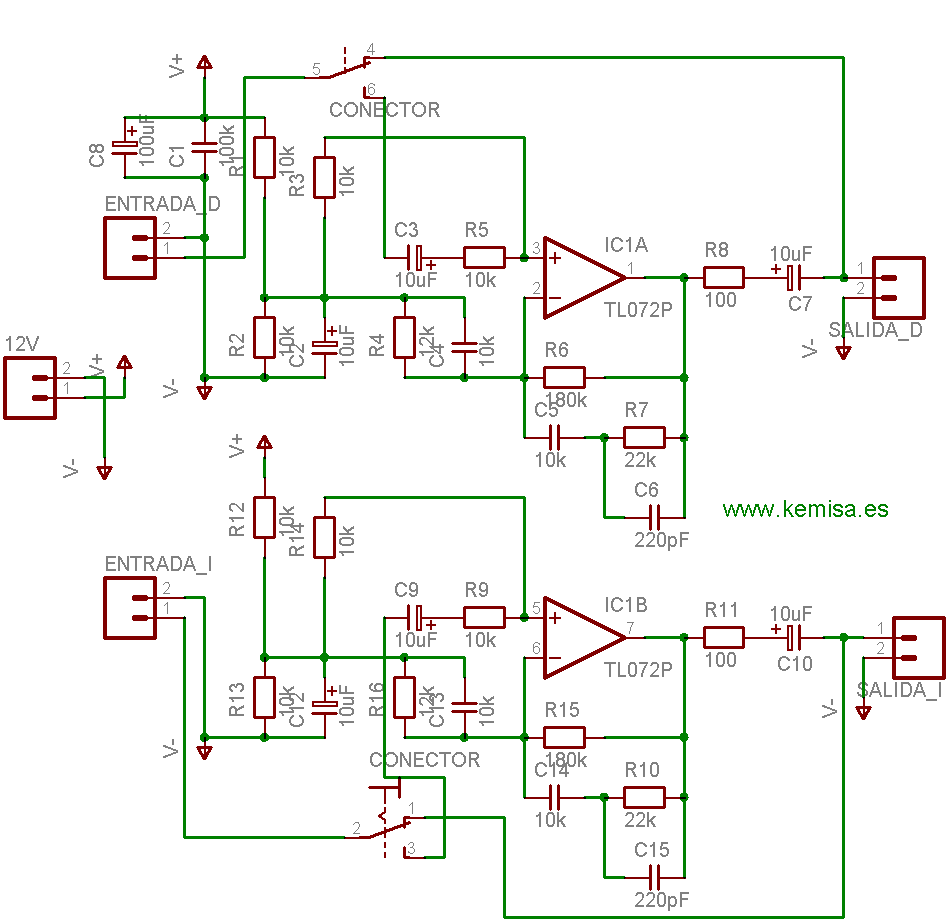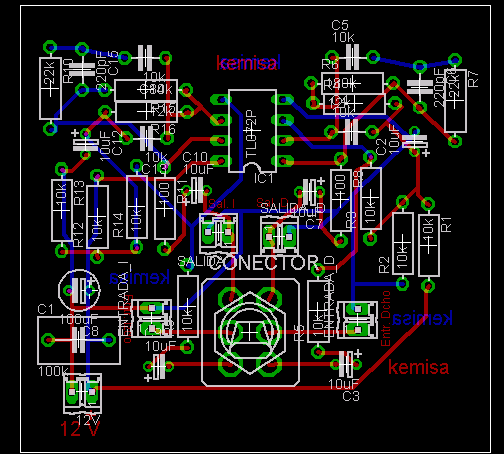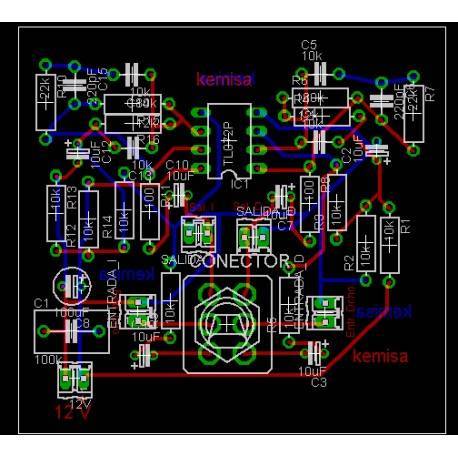Audio circuits
Viewed products
-

Loudness circuit
With this circuit we recompense the...
Loudness circuit
With this circuit we recompense the human ear deficiency to perceive less sharp and less deep tones of those that a melody really has at low volume.
Data sheet
| Design | Schema and circuit |
| View | No display |
| Supply voltage | 12 Volts |
| Electronic | Analog electronics |
| Photo | No |
More info
In the following graphic we can see how a human ear perceives different frequencies depending on the sound pressure (the volume).
They are called equal loudness contours. Two tones that have different frequencies and the same sound intensity are perceived differently.

With this circuit we compensate that low and high frequencies loss that we experience when we listen to the music with low volume.
The circuit is quite simple and it is based on an operational type TL072, or equivalent, and on a filter which is in charge of executing low and high frequencies of 12DB order. We can experiment as much as we like, while trying to change filter values, from R7, C6, C5, C4, R4 in the right channel and R10, C15, C14, C13, R16 in the left channel.
The filter is placed just before the amplifier’s volume control.
The power can range from 10 to 22 volts in the direct current, and we can take it from the amplifier’s power source.
Of course, it has to be stabilized and filtered to avoid noise at the output. The input and output circuit connection cables are to be shielded.
The wiring diagram.

The switch is mounted on the side of the copper tracks, so we fasten the circuit to our chassis by means of the nut that holds the switch.
The circuit board.




